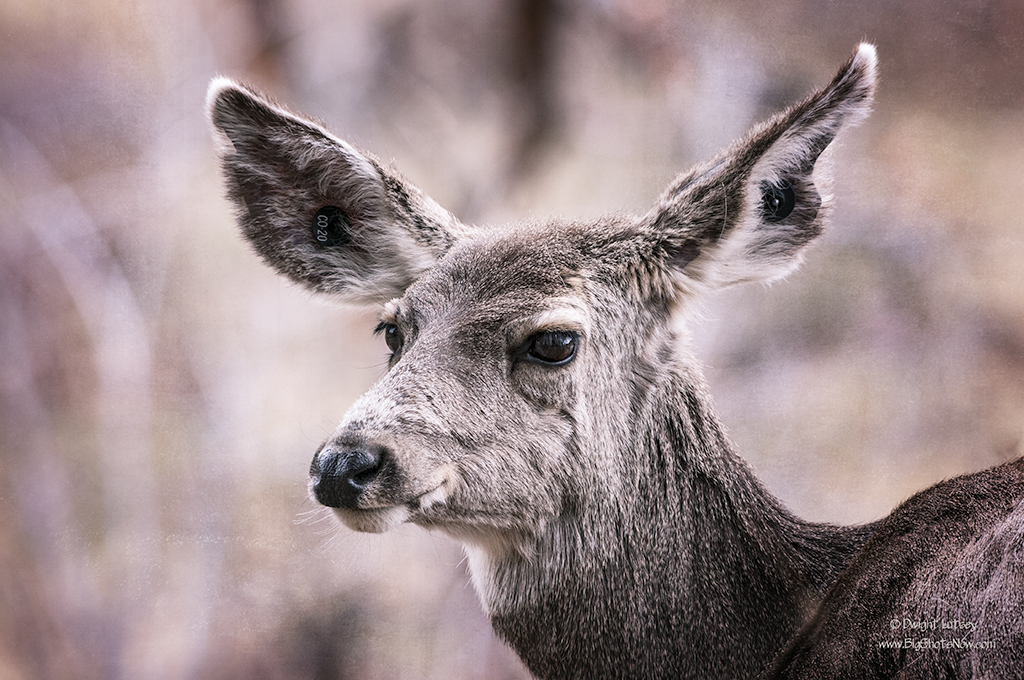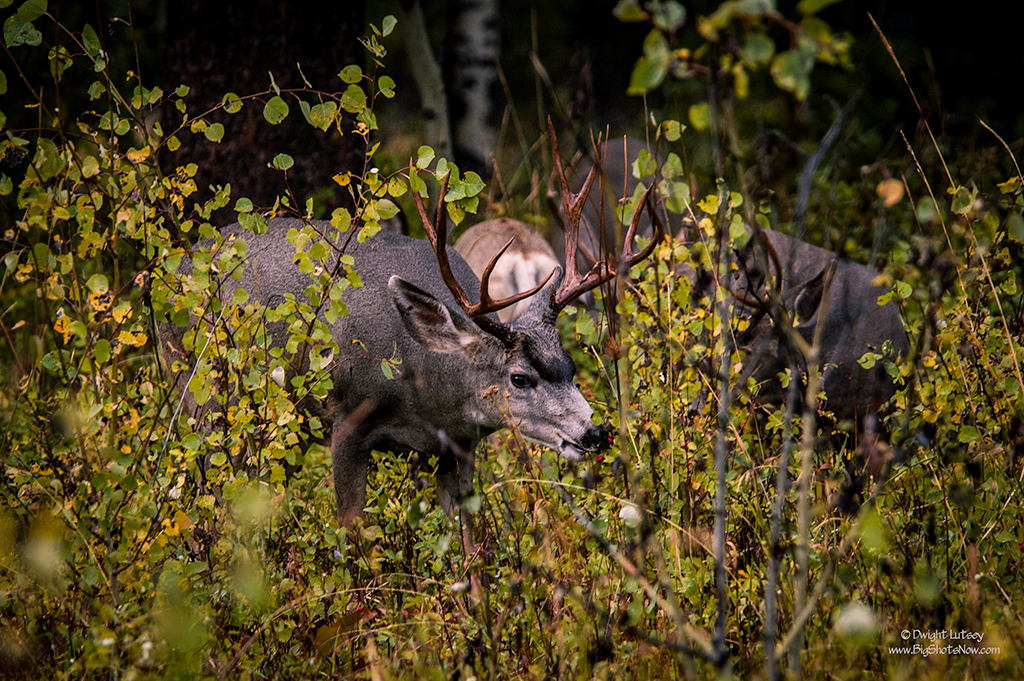
My name is Millie Elizabeth Smallfoot and I’m a Mule deer doe currently residing in Rocky Mountain National Park. You would not think it to look at me a but I am a twice convicted felon on the National parks Three Strikes program. I come from a good family. I have never offended before but now I’m one strike away from the death penalty. I do not know what I have done wrong.
Early one morning as I was making my way down to the creek to begin my morning ablutions I felt a blow to my left hindquarters, then a stinging pain. I became dizzy and disoriented but before I passed out I saw four large men in green jumpsuits approach me and wrestle me to the ground.
I don’t know how long I was unconscious but upon awakening I felt a foreign object in my ear. It was a sharp pain that scared me but that was nothing to the feeling I had the moment I found out that I had been branded or tagged as a criminal. One of the larger bucks who had one in his ear too came over to me and said ” Strange, they usually don’t do that to does.” I asked what it meant and he said it was the way management identified troublemakers and it was a serious deal. I had better watch my step he said.”You don’t want another one.”
Frantic and desperate to find out what this meant and why it happened to me I went to Park headquarters to speak to someone who might be able to help me. Instead I was met with outright hostility and contempt and told that I must have deserved it or they wouldn’t have tagged me. Pleading with them to explain what obviously was a mistake, they simply handed me a pamphlet titled “Three Strikes and you’re out, How the park system manages it Problem Residents.” and told me to leave.
The pamphlet explained that some of the larger parks had residents such as Grizzly bears that would make trouble and be rude to park visitors. These “bad” bears would break into trash cans, destroy tents and campsites, and even bite people. Consequently they were caught, had this device put in their ear and told not to do it again. One tag meant you’re were an at risk individual, two meant you were on the watch list, and three, three meant you were incorrigible and would be “put down” at the next infraction. It took me a moment to realize what “Put Down” meant.
I’m a doe, possibly the least offensive resident in the park. I weigh 72 pounds max. I’m not going to break into any trash cans or campsites or even bite someone. I’m a leaf eater for cripes sake. If i even see anyone I run and hide in a bush.
Apparently it was a mistake to take my case to management. Park headquarters took that as sign of aggressiveness and the next morning I received my second tag. Now I keep myself way up in the back country behind bear lake. I have plans to take my fawn and head out of the park. Maybe someplace like *The Institute where I’ve heard they don’t support tagging in any form. I heard that they can even take these tags out. I could have a new life, free, off of death row. The trick is to get out of the park. They feel that they own you and especially more so if you are tagged, they aren’t going to let you go. I’ve been planing this for months now. My fawn is old enough that she can keep up, the aspen are fresh with new green leaves, the mountain mahogany is budding out, there is an unusual number of visitors to the park this Spring so management is not watching as close. I know we can make it once we cross the park border. Fortunately there is no hunting season open right now so we should be in the clear. I just hope that The Institute will take us in. And I can finally lose these tags.
*Note: For those of you unfamiliar with The Institute and what it does, please see the page labeled The Institute on the Menu Bar above. That should explain everything. You shouldn’t have one single question remaining regarding The Institute after reading it. None. For those of you favored few who already know about the Institute, Nevermind.


You must be logged in to post a comment.